We’ve forgotten this now, because this pandemic has unmoored us. New information about the crisis crests by the minute.
But back in January, the single biggest health and economic calamity of our lifetimes crept towards us slowly. In Australia, we thought 2020 had delivered its worst when the swathes of the coast and country burned, and cities choked in smoke. As we crept towards the Australia Day holiday, we thought we were about to turn the corner.
We were wrong.
By the third week of January, the disaster of Covid-19 was escalating at its point of origin. By 21 January, 198 cases of coronavirus were confirmed in the Wuhan region, with three fatalities. Another 19 cases were reported in other regions of China, and a smattering of infections had turned up in Thailand, Japan and South Korea.
The distant thunder in Wuhan triggered Australia’s bureaucratic machinery for managing a pandemic. The Communicable Disease Network requested a coordinated national health response on 20 January, and Australia’s chief medical officer, Brendan Murphy, convened a meeting of his state counterparts to discuss developments.
The national incident room was activated and Murphy’s group, the Australian Health Protection Principal Committee, endorsed enhanced border measures for the three direct flights a week between Wuhan and Sydney – but not mass screening at airports. The next day, 21 January, Murphy told journalists this was now a “rapidly evolving situation”. Concern had been heightened by events of the “last three or four days”. There was now evidence of human-to-human transmission of Covid-19.
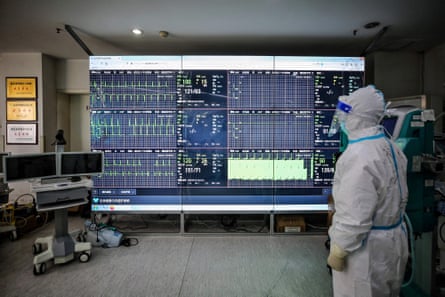
At around the same time that Murphy was briefing reporters, the national women’s soccer team of China passed through Wuhan on the way to Australia. A week later, that team was holed up in quarantine in Brisbane. There was a confirmed case in the state, a Wuhan resident, in isolation at the Gold Coast University Hospital: Queensland’s patient zero. By the end of January, Australia hit seven cases.
Queensland was the first state to move. It declared a public health emergency on 29 January. In Canberra, the response was also gathering pace. Morrison told reporters the government would activate Christmas Island as a quarantine area. He also upgraded the travel advice, telling Australians to reconsider all travel to China.
But coronavirus was not the prime minister’s only problem. Over those same late summer days, he was easing Bridget McKenzie out of her portfolio after a scathing audit report about the management of sports grants. Easing McKenzie out triggered a toddler tantrum in the Nationals. Barnaby Joyce made a bull run at Michael McCormack. Obscured by the B-grade theatrics, and by the pursuit new facts about sports grants, the looming health crisis continued to build in the background as the Australian parliament roiled throughout February.
On the last sitting day of the month, 27 February, Morrison summoned reporters to his courtyard at parliament house and dialled it up to 11. He declared the risk of a global pandemic “is very much upon us”.
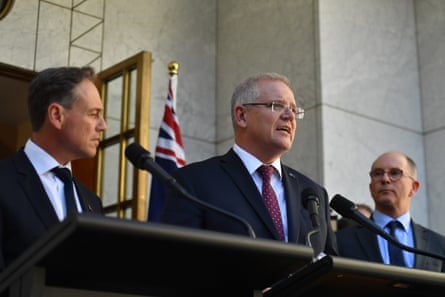
He initiated the government’s coronavirus emergency response plan. There were now substantial outbreaks in South Korea, Japan, Italy, and Iran. There were cases in Africa, West Asia, Europe and South America. But Morrison was both moving, and soothing. Normal life would go on. “You can still go to the football, you can still go to the cricket, you can still go and play with your friends down the street, you can go off to the concert and you can go out for a Chinese meal.”
A day later, health ministers met in Melbourne. The dominant issue was aged care. A senior official familiar with the discussion on that day insists that only Queensland, which had already declared a health emergency, and New South Wales, had a sharp grasp of what was coming. Victoria was slow, but would come in forcefully later. “There really was no national leadership at that point,” the official says.
Morrison and the government would doubtless contest this assessment by pointing to the steady accumulation of action since 20 January. The government was also beginning to talk itself around on the likely need for fiscal stimulus. The first package of measures was in its infancy.
But the clear impression from the states in late February, at least at the health intersection point, was Canberra hadn’t yet locked on just how bad the Covid-19 health crisis would ultimately get.
In March, the operating tempo would change.
Two key events would drag the federation of Australia into the new normal.
The week that changed everything
The Covid-19 pandemic is an extraordinary event. Live coverage throbs day and night. Billions blur into other billions, days become indistinguishable. But in Australia, two incidents in March moved the dial, pushing the management of the crisis into new territory.
The first escalation happened on 13 March, when Morrison met the premiers and chief ministers in Sydney for the council of Australian governments. The second major pivot point played out over the following week, culminating in the weekend of 21 and 22 March.
The Victorian premier, Daniel Andrews, gave an inkling of what was to come on 10 March. Standing inside the Royal Melbourne hospital, he warned journalists “extreme measures” were coming. Schools would be closed, entire workforces would be working from home, sporting events would be cancelled. “That time will come,” Andrews said. “We are going to ask a lot of Victorians.”
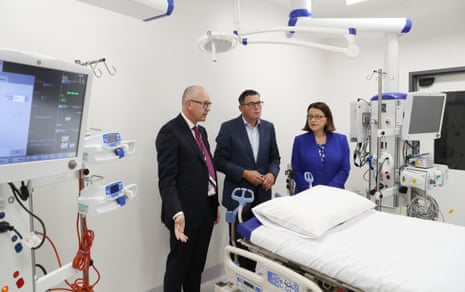
Two days later, in Canberra, Morrison launched the first fiscal stimulus package, which was predicated on businesses being open, at least in some form, and consumers being able to spend. He told reporters he was confident the targeted measures would be enough to “do the job” of propping up the economy. If more was needed, there was always the budget in May.
By the evening of 12 March, the premiers and chief ministers were at Kirribilli House with Morrison for a social gathering ahead of Coag the next day. Some of the leaders noticed when Andrews hung back when others left. The Victorian premier congratulated the prime minister on the stimulus, but predicted government assistance would shortly need to tick over into survival payments. Swathes of the economy were going to have to shut down.
By the time the leaders woke the next day and made their way out to Parramatta stadium, which was the venue for the Coag talks, the world had reached 130,000 Covid-19 cases, and more than 4,700 deaths had been recorded. The Italian health system had been overwhelmed. There were more than 1,000 fatalities.
Overnight, there was a wipeout on global financial markets. London and Wall Street had recorded their worst trading days since Black Monday in 1987. Donald Trump slapped a travel ban on Europe. When the Australian markets opened, the ASX plunged 7%. The Reserve Bank pumped more than $8bn into short term bank funding. Flight Centre closed 100 stores. The Grand Prix fell over, which triggered a cascade of event cancellations over the course of the day.

That Friday felt like pure mayhem. Live coverage could barely keep pace with events. But inside the cavernous football stadium, the Coag meeting started with the preordained agenda. There were briefings from the Reserve Bank of Australia and from Treasury. Murphy, the chief medical officer, also supplied a detailed briefing. The leaders then broke for a cup of tea.
Running parallel with the leaders, health advisers from the states were also conferring by teleconference. Murphy was shuttling between the leaders meeting and the teleconference. Victoria, which had recorded the first case of community transmission that Friday, and Queensland, pushed during the discussion for stronger and more urgent action to force social distancing. People familiar with the dynamic in the meeting of medical officers insist it wasn’t a boil over, but the forward-leaning states insisted more was needed. They sought a consensus to craft new, stronger, recommendations to be put to the leaders.
Murphy conveyed that shift to the leaders meeting. That news hit the group like a thunderclap. Morrison was visibly annoyed the health guidance had changed in what felt like the blink of an eye. Officials were promptly turfed out of the room and the leaders were left in a huddle, in a cavernous, empty football stadium in western Sydney, to determine what to do next.
The table had been set for lunch. Lunch didn’t happen. Tumult happened. But within the hour, entirely on the hop, nine political leaders had invented a new governance structure. No papers, no proposals, no guidance from officials. Morrison suggested they manage the crisis by convening regularly as a national cabinet. The proposal materialised in the room. The states agreed and insisted the group just be them, first ministers – no opposition leaders.
The group created an emergency national government of nine. Morrison later bolted in the national cabinet as a subcommittee of the regular cabinet.
The leaders then moved to the discussion about imposing new limits on crowds, and how that would be announced to the public. There was a debate about when the proposed restriction should commence. Now, or Monday? Did people need to be given notice given it was now mid-afternoon on a Friday and events were scheduled for the weekend? There was a view some notice was required.
Morrison war gamed in the leaders huddle about whether going to the opening game of the NRL season on Saturday night – something the prime minister had been foregrounding for days – would be a good or a bad signal. Would people be unsettled if he suddenly wasn’t going? The leaders resolved the position they would telegraph, and emerged, and Morrison announced there would be a ban on non-essential gatherings of 500, effective Monday. The prime minister said he’d be going to the football on Saturday night because there was no cause for alarm, and “it might be the last game I get to go to for a very long time”.
The day wasn’t yet over. Shortly after the leaders scattered, there was another bombshell. The home affairs minister Peter Dutton had been infected with the virus, likely during a trip to America. That news broke in the early evening, raising alarm about whether the prime minister and other key cabinet ministers had been exposed to the illness, and may need to self-isolate.

A small frenzy ensued, particularly when photographs emerged of Dutton grinning next to Donald Trump’s daughter, Ivanka Trump. The story bounced quickly into American news outlets.
By 7.30pm on Friday night, Morrison was not going to watch his beloved Sharks.
State-federal tensions boil over
The rapid recalibration at Coag was the first of two gear changes. The next one played out over the following weekend.
Covid-19 is a health crisis that has triggered the most profound economic shock since the global financial crisis. Morrison has told colleagues the impact of this pandemic will be more far-reaching than the Depression. As the world wobbles, Australia is worried about failed states, and the risk of a global sovereign debt crisis.
The national government is responsible for economic wellbeing. This crisis has triggered a legitimate dialogue between the tiers of government about protecting lives and livelihoods; how to craft public health measures that save lives without deepening an economic crisis that would threaten wellbeing in other ways. Morrison wanted to craft measures that would enable Australia’s economy to move into a period of hibernation, and he wanted to sequence the inevitable health restrictions to flatten the curve of infections with bursts of significant fiscal firepower.
The economic response to this crisis is massive, as it was a decade ago during the global financial crisis. The Morrison government is drawing on the central bank, on the Council of Financial Regulators, on the retail banks, on big corporates, on coordination commissions. Public servants are being redeployed to frontline agencies. Sacked call centre workers are being picked up by Centrelink, and working in contact-tracing call centres in the states. Morrison and Frydenberg are talking regularly to their counterparts overseas.
While the economy is largely Canberra’s problem, the states manage health systems, and there was concern in the two most populous states that tough restrictions necessary to stop infections were not moving fast enough. Which brings us to the events of the weekend of 21 and 22 March.
It was this weekend where the inevitable tension in the federation between saving jobs and preventing unmanageable numbers of ICU patients reached its peak, and manifested publicly as sonic boom Sunday.
The NSW premier Gladys Berejiklian, had endured a terrible few days. Passengers from the Ruby Princess cruise ship had been allowed to disembark and disperse around the country even though some were already ill with Covid-19.
That was a total fiasco, and it triggered inevitable blame-shifting and finger-pointing between NSW Health and Border Force in Canberra. The Ruby Princess, the boat two Coalition governments failed to stop, would cause a spike in infections over the coming week.

Sydneysiders also flocked en masse on Saturday to Bondi beach, taking advantage of the glorious early autumn weather. Social distancing was nowhere in evidence, and by Sunday, the number of Covid-19 cases in Australia sprinted past 1,000. A tipping point had been reached.
In Canberra, Morrison was hunkered down with colleagues finalising the government’s second stimulus package. The plan was to unveil the $66bn worth of new measures on Sunday. Journalists were briefed late on Saturday so stories could appear in the Sunday papers and on the political shows.
But in Sydney and Melbourne, Berejiklian and Andrews were alarmed. They felt public health restrictions needed to be imposed more quickly, because people were ignoring polite entreaties from politicians and chief medical officers. Canberra was not blocking action, but a dialogue about how hard to go with social distancing restrictions that would force businesses to close remained unresolved.
Berejiklian and Andrews were in touch throughout Saturday, into Saturday night and then again Sunday morning. Berejiklian told Morrison on Saturday night that NSW and Victoria wanted to implement the first stage of restrictions pronto – the closure of places like pubs and clubs. She said the two states were prepared to move ahead of other jurisdictions if there wasn’t prompt consensus through the national cabinet.
Not all states were persuaded that it was time to force widespread lockdowns, and worried they would be dragged along in the slipstream when there wasn’t a solid evidence base. Politically it would be hard for premiers to explain to their constituents why some states were moving and they were not. One official from another state says: “We [were] moving ahead of the health advice, and all the political pressure is to go further; to be out in front of this”.
But the ACT was fully on board with the NSW/Victoria view that stage one lockdowns had to happen, and now. The chief minister, Andrew Barr, noted there could not be one rule for Canberra and another for Queanbeyan. A leaders meeting scheduled originally for Tuesday had been brought forward to Sunday evening.
The two premiers were not mucking around. Morrison was in his courtyard in Canberra about two-thirds of the way through unveiling stimulus round two when a reporter from the Nine Network asked the prime minister to comment on a new push by NSW and Victoria “for a total shutdown on non-essential businesses”. The story had been briefed to Canberra reporters at a time to capture national attention, while Morrison was on his feet, and the news channels were broadcasting live.
Morrison was not pleased by the political firebomb, but he ploughed on. He responded by saying he would be guided by the health advice that was currently being prepared by the chief medical officers. If he had a view, he would be expressing it in the national cabinet, not on the hop to journalists. “That’s the orderly and calm way to deal with these things, and to make decisions in a responsible manner.”
Public statements from the two states followed confirming that was in fact the position: restrictions needed to happen, and they were prepared to go in advance of others. Victoria upped the ante by signalling it would close schools from Tuesday. The national cabinet had been jolted into more urgency on the health side. The view in the states intent on pushing the envelope was this was a necessary jolt, delivered just in the nick of time.
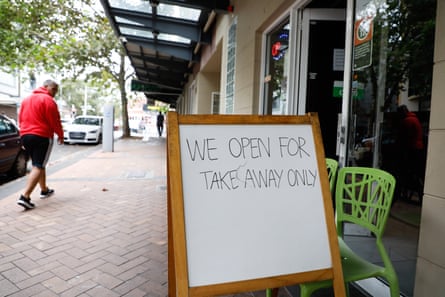
Later that night, after the national cabinet discussion, Morrison fronted the cameras and confirmed pubs and clubs would close. Restaurants and cafes would be restricted to takeaway only. Schools, confusingly, seemed to be both open and closed.
Given the obvious tumult of the day, Morrison also felt compelled to affirm the national cabinet had not splintered. The self-created government of nine had mauled, inelegantly, to a point of consensus. It has weathered its first big test. “All of its members are very committed to its processes and decisions,” the prime minister said.
The new normal
This pandemic is close. It casts a shadow. “We are all next to it,” Josh Frydenberg tells Guardian Australia while downing a late dinner in his Canberra digs one night this week. As the treasurer was working up the third economic support package in as many weeks – the $130bn for wages subsidies the government unfurled early this week – his cousin was seriously ill in intensive care in a Melbourne hospital. Frydenberg’s cousin had picked up the virus during a trip to London with his wife, and soon succumbed to a high temperature and breathing difficulties. Fortunately, he is now recovering well.
After the watershed weekend in March, the public health restrictions have only gathered pace. Stage one was followed quickly by stages two and three. One of the recent national cabinets decreed that gatherings would go from 10 to two. Some insiders say the health advice going into the meeting was to maintain the restriction at 10, but leaders defaulted to two. Queensland pushed for one of the more recent measures – quarantining returning travellers in hotels. The state argued that particular measure would have the biggest positive impact on infection rates without inflicting more pain on the general community.
Messaging at the beginning was confusing, and at times contradictory. But the public health messaging has become simpler, and more forceful. Stay home, unless there is a very good reason to go out. The commonwealth meanwhile keeps rolling out economic support. Wages subsidies. Free childcare, at least for some. Support for tenants and landlords.
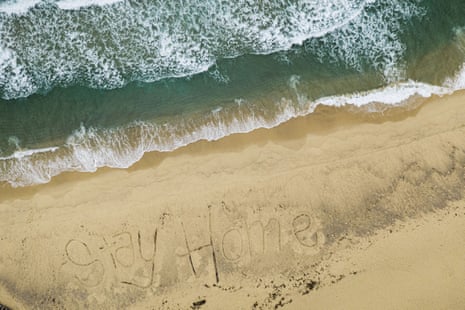
The new normal is uncomfortable. It is disconcerting. Gathering places that once teemed with life are empty. States are walled off. The businesses still open wonder when they will have to close their doors. The federal parliament is only sitting in short sessions to pass specific measures. Liberty has been curtailed by emergency powers now in place across all the states and territories, enforced by state police. It is reasonable to wonder how long the public will consent to these arrangements. Australia is a vibrant, noisy, democracy, not a police state.
Things feel grim, because they are grim. The suspension of ordinary existence is absolutely necessary in the service of saving lives, but we have entered a new normal that could persist not for six months, which is the timeframe invoked most regularly by political leaders, but for a year. Or two.
The medical profession remains on the fence about whether the governments of Australia are currently getting the balance right. The president of the Australian Medical Association, Tony Bartone, tells Guardian Australia that can only be judged with the benefit of hindsight. “The truth of the matter is governments had to go further and deeper because of the lack of community buy-in initially,” Bartone says.
“We can raise all number of reasons about why that’s the case including mixed messaging, poor information and communication, and indifference by younger sections of the community who thought it was an old person’s disease and they didn’t have to worry. For all those reasons, governments have had to take the community on a conversation.”
Bartone also cautions against some of the optimistic commentary that has emerged over the course of the past week that Australia has begun to flatten the curve of new infections. “We are flattening it but remember that also, we had a big spike in numbers last week and previously because half the Australian population abroad returned home before the lockdowns.”
“You’d expect a bump,” Bartone says. “You worry whether that flattening is actually a true flattening or whether we came off a high base, but there is still an underlying trend that needs to be flattened.”
Andrews brushes off commentary that Morrison was too slow to act on the health impacts. “I think the PM is doing a fantastic job in very very difficult circumstances. I sent him a text the other night to say no prime minister in our lifetime has had to face down something as significant as this, and that national cabinet is working extremely well, and this was a fantastic suggestion from him and we are all very grateful to be acting as one government almost, if you like, across the country rather than nine of us doing our own thing.”
He says the federation creates a tension reflecting divided responsibilities. “There is that tension, that’s perfectly healthy and appropriate. It’s a big thing to close businesses and see people stood down. These are massive decisions to make and there is a very big toll that comes with that including anxiety and all sorts of other issues, often tragic issues, like increased family violence rates for instance and all sorts of other mental health considerations. It’s not a bad thing that we are all grappling with that very difficult choice, trying to smash the virus and trying to preserve the economy as much as we can.”
Barr says the ad hoc government of nine is learning on its feet. “We are getting there now but we weren’t quite there initially around fully appreciating how much the health curve would impact on the economic outcome. I think that gap is now being closed.
“There’s been a few things that in hindsight you would like to have got there a week to 10 days earlier, but we have got there, sometimes just in time. What I would like to see in the next phase of this is we are not playing catch-up so much; that we are shaping the future a bit more rather than reacting to the past.”
Barr insists the national cabinet has brought out the best in the federation, and could, in fact, be a segue to a newer, more effective style of politics and governance. “This mechanism has forced cooperation that we haven’t seen before. The level of information sharing is much improved from the case before.
“If you were observing that national cabinet from outside and you knew nothing about Australian politics you wouldn’t know which side of the fence people were on. If you’d said to me three weeks ago Newstart would be doubled, we’d have a significant wage subsidy scheme that is effectively a guaranteed minimum income, that private health would be enlisted in the public system in this way, that there would be talk of nationalising certain industries, people would have thought you were crazy, but this is a once-in-a-century health and economic crisis that required consensus decision-making and more centrist policy outcomes.”
Morrison warned Australians this week we are in this for the long haul. “It will be months. We need to make changes that we can live with and that we can implement day after day, week after week, month after month.”
Andrews is even blunter about the prognosis.
There is no obvious end point to this crisis, at least not until there is a vaccine. “The most frustrating thing about this is not being able to give people an end date. We are asking so much of so many, taking extraordinary steps, it is so frustrating not to be able to give people an end point.”
Nobody, he says, is going to the football or for an overseas break for the foreseeable future. “Things like international travel and restrictions on larger gatherings are going to be with us for a long time and that vaccine is some way off.
“Are we going to have many international students at universities across Melbourne and Victoria next year? Don’t think so. This challenge is going to present in lots of different ways.”
